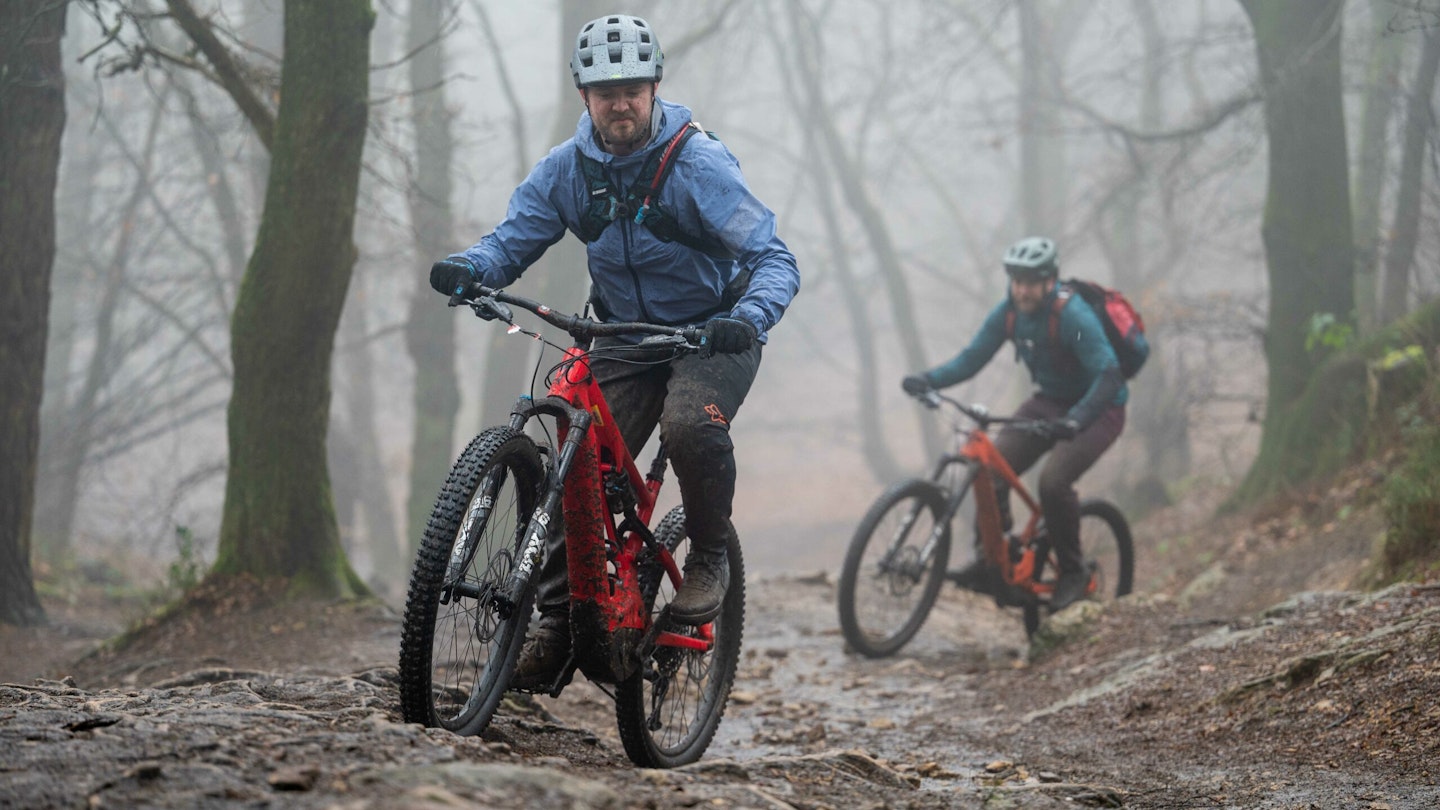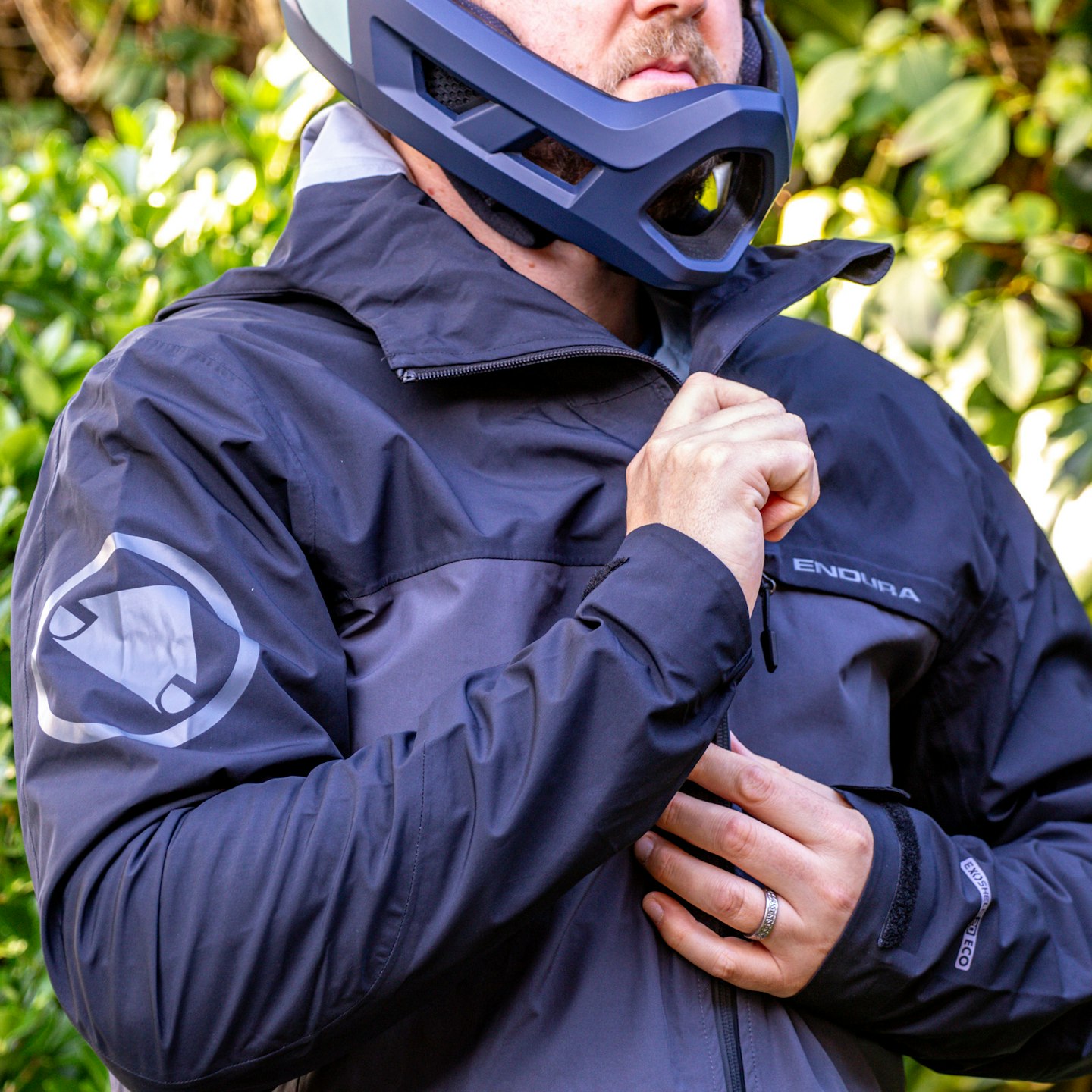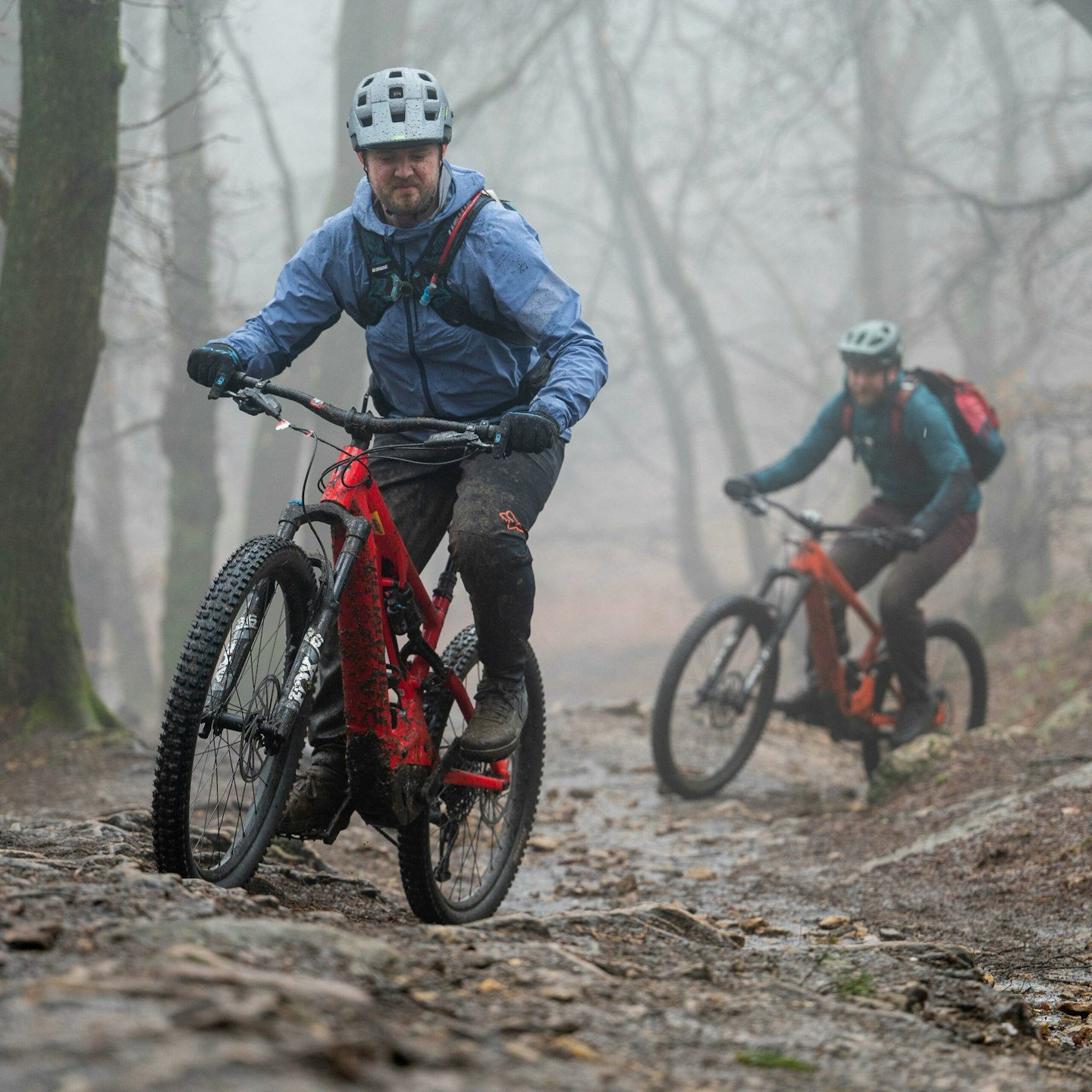If you're riding in the winter on the road or trail, recreationally or for commuting, then a weather-proof jacket is the most important item in your riding wardrobe, along with some winter shoes and some comfy bib shorts.
Cut to the chase, which is the best winter cycling jacket?
I ride all year round and the UK's late autumn and winter weather presents all sorts of challenges, from damp, cold air, to icy wind blasts that numb your face, right up to persistent threatening drizzle and thunderous downpours. With the correct clothing, you’ll be able to head out in comfort and confidence, protected from the wind and rain.
How I tested these jackets
I've personally tested all of these jackets in a variety of different cycling scenarios, from dark and frosty, 0–5°C early morning commutes, to long gravel epics and high-tempo cross-country races. I've also worn them at bike park, which mixes freezing winter downhill runs with the sweaty, humid environment of the uplift van. I know what's good, and crucially, what to avoid. Here's more info on how we test here at What's the Best.
I am six foot three (1.9m) and weigh about 90kg, with a 44in (110cm) chest. In general I'm an L or XL (sometimes XXL in road kit) and I've stated what size I'm wearing in each product description, so you can get an idea of whether you need to size up or down.
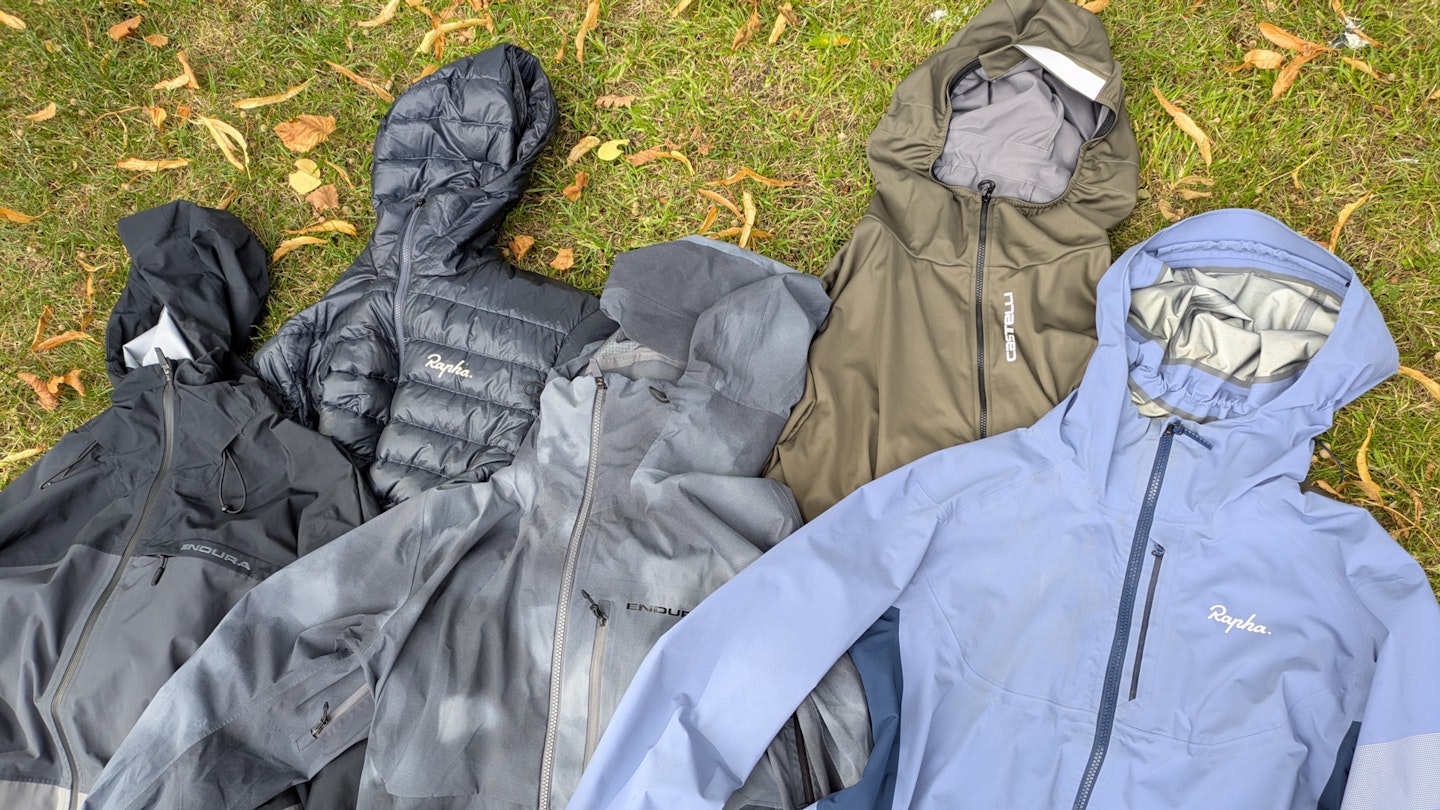
For a really detailed breakdown of everything you need to know, head down to the buying advice section underneath my product recommendations. If you’re just looking for an outer layer to protect you from the rain, head over to our article running down the best waterproof cycling jackets.
Or, if you just want to know the best overall, money no object jacket, it's the Endura MT500 Waterproof. For a better value, smart-money but still bone-dry alternative, it's the Endura Singletrack Jacket. Rapha's Trail Jacket is ideal if you want something to pack away in your bag just in case, while the Castelli Trail Hoodie keeps the wind out on bleak early morning commuter rides.
The best winter cycling jackets in detail:
Best winter jacket overall
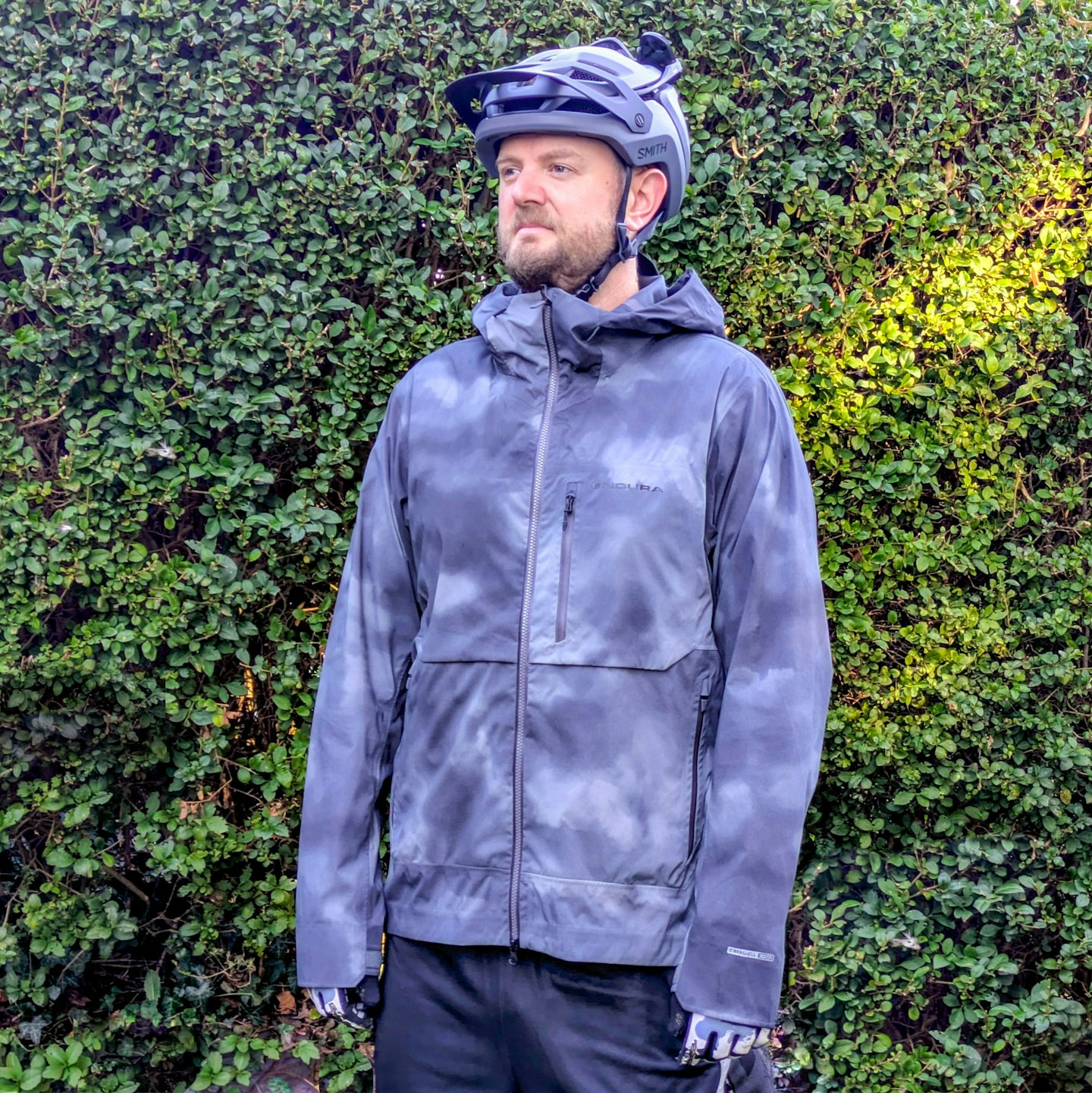 What's the Best
What's the Bestwww.endurasport.com
Verdict - The ultimate money-no-object winter cycling jacket, the MT500 is lightweight and bombproof, and has never let me down in any condition.
Fit - Size XL gives me plenty of space for mid-layers and the hood fits easily over my helmet.
Long term update - After nine months I can safely say the MT500 is worth the extra outlay over the Endura Singletrack - I miss its extra features when I swap back.
Tried and tested by Adam Binnie: "Given how highly I rate Endura's (cheaper) Single Track jacket, I initially thought the MT500 was going to have to work hard to convince me it was worth an extra £100.
"From a numbers perspective it's an easy win being both more waterproof and more breathable (20,000m vs 10,000m and 30,000g/m²/24hr vs 20,000g/m²/24hr) but how tangible are those figures when you're out and about on the bike?
"Speaking objectively, I vastly prefer the MT500's fabric, which is softer to the touch and somehow feels thinner, making it move and flex more naturally. The Singletrack can sometimes bunch up when I'm leant over and in general this makes me more aware of wearing it, while I forget I've got the MT500 on.
"I don't get as hot in it as the Singletrack, which I sometimes don't even need a mid-layer with. You could view that as a negative or a positive, I suppose.
"I also love the additional poppers - two in the hood to keep it tucked away and under control (the Singletrack's can sometimes flap about in the wind) and two behind the zip, which allow you to keep the jacket closed but undone, for better airflow.
"It has the same number of pockets, but the MT500's front zips have storm flaps (the Singletrack does not) and the hood adjusters are easier and less fiddly to use, particularly when wearing gloves.
"All of these things add up to a big improvement, in my opinion, and if money is no object the MT500 is a no-brainer upgrade. That said, I still really rate the Singletrack and if anything, the fact the MT500 is only incrementally better, shows what a good jacket the Singletrack is."
Pros
- Weather just doesn't worry me when I'm wearing this
- Breathable and comfortable on long rides
- Additional features like hood stash poppers enhance appeal
Cons
- It's a lot more expensive than the already-brilliant Endura Singletrack
Best cycling jacket for commuters
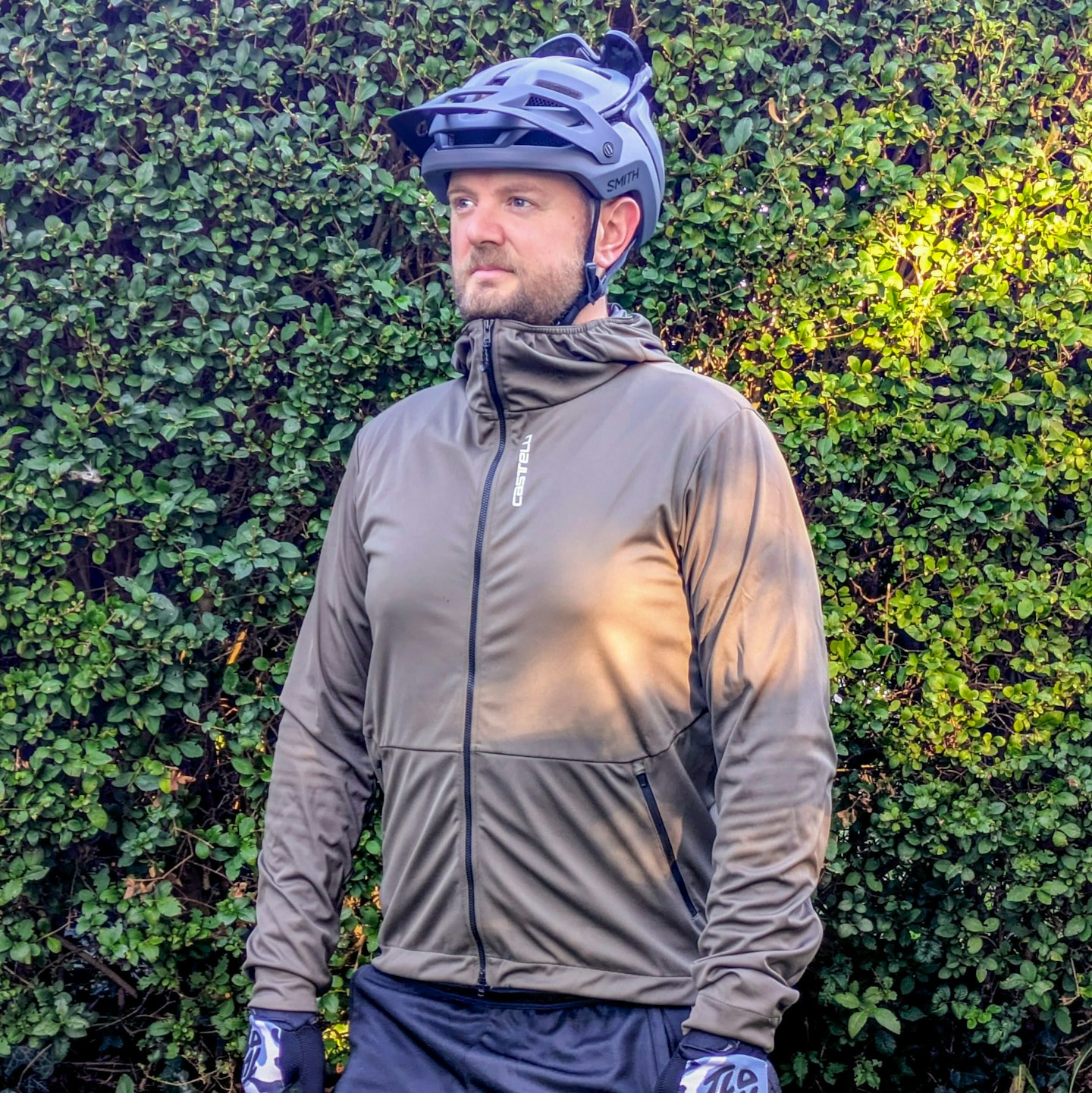 What's the Best
What's the Bestwww.castelli-cycling.com
Verdict - Windproof and water-resistant, yet highly breathable, to take the chill out of those cold starts. Casual fit and styling makes it super versatile.
Fit - XL for me, which fits well, thanks to the fact this has a more relaxed MTB fit than Castelli's pure roadie stuff. The hood fits over a helmet easily.
Long term update - come back later to see how I've got on with this one
Tried and tested by Adam Binnie: "Perfect for gravel rides, bikepacking, and cold-start commutes, the Castelli Trail Hoodie has a casual look, but there's nothing casual about its winterproof credentials.
"Gore-Tex Infinium Windstopper means it blocks icy blasts from find their way to your core, and it'll shake off some light drizzle, but you'll want a hardshell over the top if it's properly hammering it down. Castelli doesn't quote a waterproof rating, so I assume it's not fully waterproof.
"However, for me it works in that awkward, dry, 5-10°C range where a waterproof coat will end up making you sweat, but it's too cold for no jacket at all. At least at the start of the ride. This jacket is spookily good at blocking the wind, which you'll really notice if the rest of your outfit isn't windproof.
"If you start to warm up the Trail Hoodie can be unzipped from the bottom to let a bit of a breeze through, and the zip has an easy-to-grab loop that makes using it in gloves super easy. Two pockets feature on the front, and there's a third hidden one around the back, along with a long and wide reflector.
"Overall I really like this jacket and use it a lot more than I was expecting to, especially on my daily morning gravel ride. It won't be enough on its own in the properly bleak winter months, but it's perfect above zero degrees, especially when you've got an office or a post-ride pub meet-up to go to."
Pros
- Takes wind-chill out of the equation
- Relaxed but still quite aero fit
- Reflector for early morning commutes
Cons
- Not fully waterproof
Verdict - Packed with features and impervious to the weather. Endura's MT500 is slightly nicer but costs an extra £100.
Fit - XL is spot on for me, leaves a bit of room for a mid-layer and the hood easily goes over a helmet.
Long term update - it's still totally waterproof after a year despite me cramming it into my rucksack and crashing in it twice. It doesn't even look dirty, and the water still beads off it.
Tried and tested by Adam Binnie: "The Singletrack jacket is Endura's ultimate Goldilocks waterproof, offering just the right balance of weather protection, breathability and value for money. If you ride (or race) in persistent freezing rain then the range-topping MT500 might be worth saving an additional £100 for, but if not then the Singletrack is the smart buy.
"Don't be fooled by that faint praise, the 10,000mm waterproof rated ExoShell20 fabric means this jacket is going to keep all but the most torrential rain at bay, and really those are the kinds of conditions where it's probably more sensible to leave your bike in the garage anyway. It's also 80% recycled, PFC-free, and treated with a non-toxic water repellent finish.
"The latter makes rain bead up in a way I've never experienced in a coat - it looks more like my car after I had it ceramic coated - which not only reduces the chance of water finding its way in, but also stops the material wetting out, becoming heavy and cold. Waterproof jackets also breathe much better when they're not soaked.
"On this front, I find the Singletrack runs a bit warm, which means you don't need a load of layers if you're going riding in the rain. Huge pit zips massively improve airflow and on the whole it does a good job of keeping you dry from the inside out, but it's certainly not a light jacket to stuff into a rucksack if it looks like it might drizzle.
"The Singletrack does its best work when it's already raining when you leave the house, and in this scenario I've found it virtually faultless. The zip is backed by a stormflap to stop rain penetrating and the jacket is decently long at the back to help protect from rear wheel spray.
"All the seams are taped and the hood is massive, more than big enough to fit over my helmet, with elastic toggles to help cinch it tight and get the perfect fit. You get two big handwarmer pockets and another on the chest, too.
"The standout feature for me is the feel and sound of the fabric - an odd thing to point out, but it's so soft, and practically silent on the move, unlike some jackets which can have an annoying rustle. The inner lining also feels great against bare skin, although I'd always ride in a long sleeved base layer on colder days anyway.
"Decent waterproofs can be the difference between riding all year round or only during the sunny months. I've got absolutely no concerns with heading out the door into a heavy downpour when I'm wearing this jacket, it feels hugely protective and with a bombproof construction that will hopefully last for years to come.
"Also, I know this is subjective, but I also think it looks really cool. So much so that I wear it all the time off my bike too, including on the sidelines of my son's football matches. And it's not often you get to say that about a waterproof cycling jacket."
Pros
- Thoroughly rain proof
- Superb value for money
- Minimal maintenance
Cons
- No hood stowage
- Runs a bit warm
Best sub-zero mid-layer winter cycling jacket
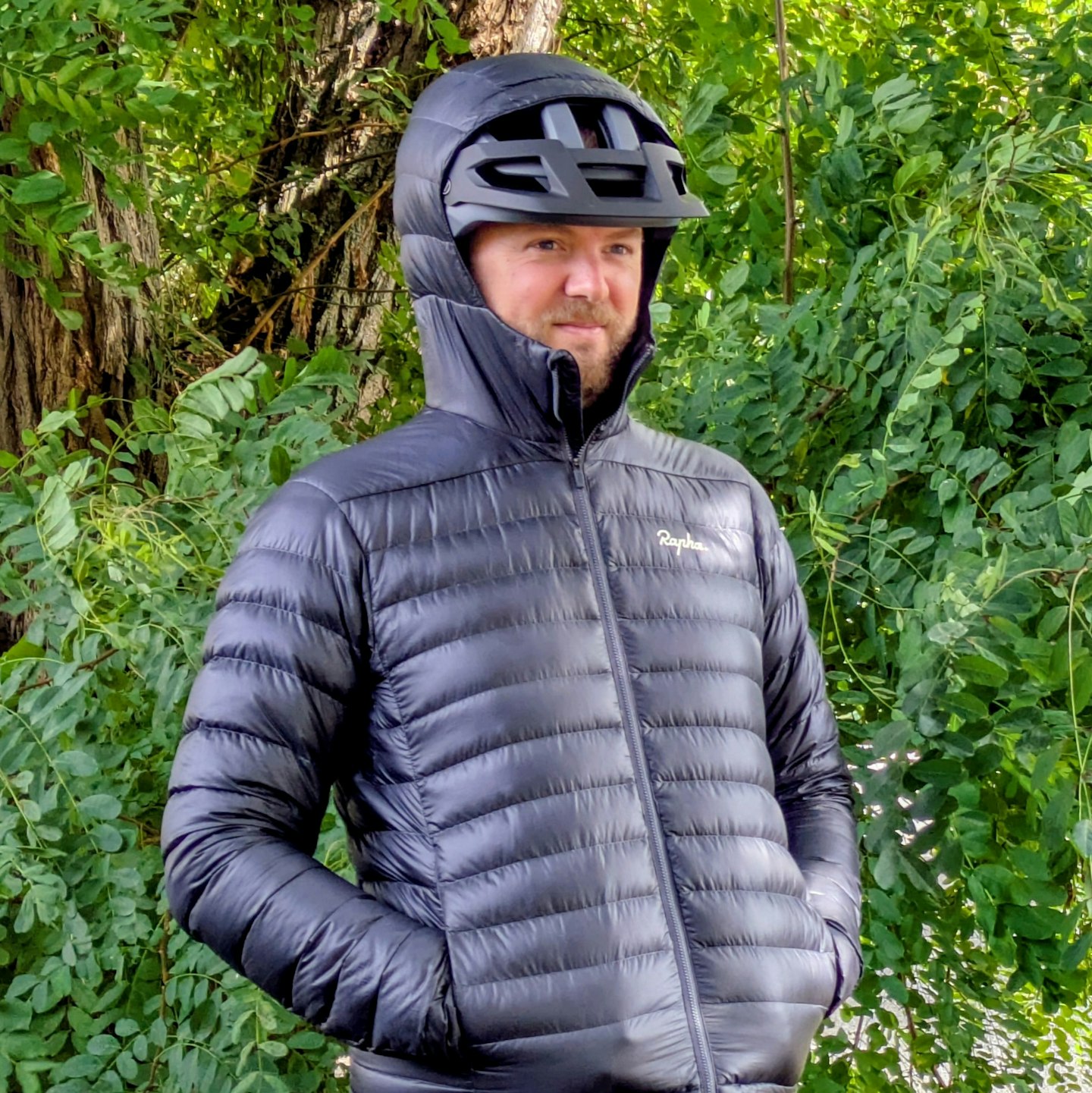 Rapha
Raphawww.rapha.cc
Verdict - Small package adds huge warmth when worn below a hardshell coat. Not waterproof, but resistant enough to ward off surprise drizzle.
Fit - Size large is figure-hugging for me, which is great for a mid-layer. The hood fits over a helmet (just) and the drop tail protects from cold tailwinds. Plus, the two-way zip means you can unzip it from the bottom or top to improve breathability.
Long term update - Still in a great nick even a year on, during which time my wife has pinched it for school runs too, so it's had a tonne of use. Light drizzle still beads away and the insulation still looks full.
Tried and tested by Adam Binnie: "I don't find myself getting cold on the bike unless it's absolutely freezing outside, but that's a different matter the second I stop pedalling, to stop for lunch or to carry out trailside repairs.
"That's where a lightweight and packable down jacket like the Rapha Explore becomes an essential addition to my rucksack. It squashes away into its own pocket and sits alongside my water bottle, without taking up too much space or adding weight.
"Light and packable, it's small enough to stash in a backpack until needed, and weighing only 328g means you won't notice it in there either.
"Best of all, the 750-fill responsibly sourced goose down keeps the cold out, while a water-resistant treatment keeps drizzle off too.
"When worn the insulation immediately warms up and provides a barrier from the cold on winter days.
"I've also noticed the cuffs are quite tight to my wrists to stop the wind from penetrating, which makes the jacket a bit tricky to take off, but that's a worthwhile trade-off.
"While riding you can unzip it from the bottom, to encourage a bit of airflow without feeling like it's going to blow off, as jackets tend to do when unzipped from the top. The materials and zip feel very high quality and while I wouldn't invite a crash while wearing it, the Explore feels built to last.
"The outer fabric is ripstop and water-resistant, but if I was going out in the pouring rain I'd want a dedicated waterproof jacket over the top."
Pros
- Lightweight
- Small when packed
- Very warm for its size
Cons
- Hood could be bigger
Verdict - A lightweight, breathable jacket that is packable, comfortable, and keeps the elements out.
**
Fit** - Size large doesn't give me a huge amount of space for mid-layers, but this is more of a damp-mild weather jacket anyway, so that's fine.
Long term update - Still waterproof and beady after a year, although it has picked up some brown stain patches from mud I didn't wash off soon enough.
Tried and tested by Affiliate Operations Editor Adam Binnie: "I've been wearing this jacket in all weathers over winter and it's been absolutely flawless. I was initially a bit worried about the "extremely water-resistant" rating - I don't like to take chances when it comes to staying warm and dry on a rainy ride, but it turns out I had no cause for concern.
"For a start, it blocks the cold in a way a jacket this thin and light has no right to. It honestly feels like my bike has a windscreen. When it comes to rain protection, I've been on some truly sodden rides (as you can see for yourself in the gallery pictures) and not once has water penetrated the jacket's outer layer. I've even been pressure-washed at the end of a muddy ride and stayed dry.
"The hood stretches easily over even my largest enduro helmet and the elasticated cuffs fit tightly over my gloves to keep the weather out. The inner material is something called C-Knit and it feels incredibly soft against skin. This is the first weatherproof jacket I've been able to wear with a short-sleeved t-shirt, usually they make my arms uncomfortably hot and sweaty.
"On that note, the material is supremely breathable and maintains a nice internal temperature despite not having armpit zips. I do miss these a bit when wearing a rucksack, which blocks a large section of the jacket's material and reduces how much heat and perspiration it can disperse, but otherwise it's perfect.
"Downsides? It doesn't have much in the way of pockets, but I don't find carrying stuff in my jacket very comfortable anyway, so I'm not bothered. It's much lighter and more packable due to not having a load of stiff zips to contend with and as a result means I'm more likely to actually bring it along in case of downpour."
Pros
- Extremely lightweight
- Comfortable against skin
- Pretty waterproof despite water resistant rating
Cons
- Lack of pockets
- No armpit zips
Winter jacket buying guide
Your jacket needs to protect you from the elements but also from whatever is on the ground, that will get flicked up by your wheels onto your face and back. Ask me how I know.
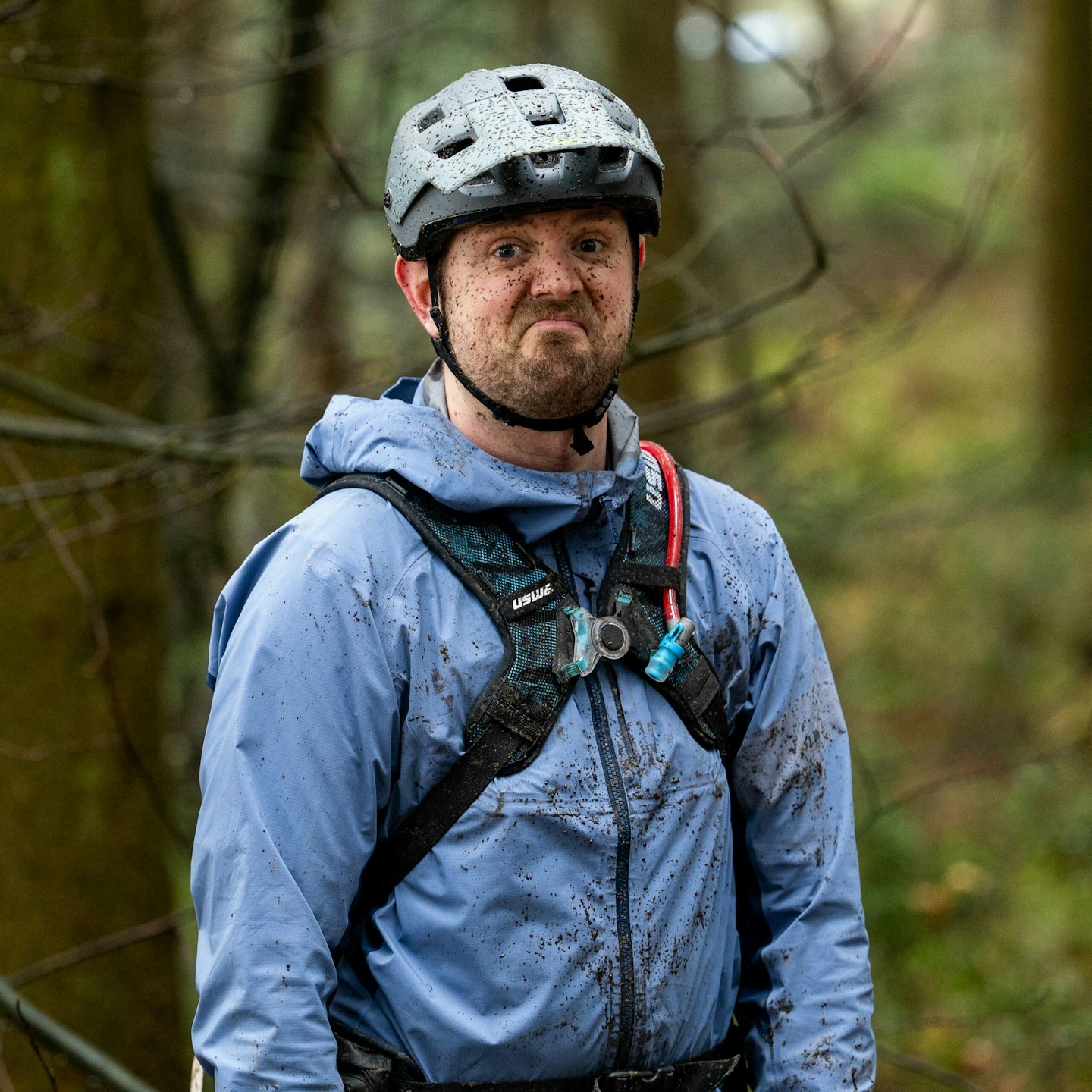
The best winter cycling jackets are going to do more than keep you warm - those with waterproofing and windproofing have increased versatility. These features also need to be combined with breathable materials, to prevent overheating during physical activity, and flexibility, to allow you to access your full range of movement.
Many of the options I’ve selected utilise thermal protection in addition to waterproof features, and this list presents a number of different options depending on whether you just want to keep the wind out and aren't interested in riding in the rain, to items that will keep you comfortable in any weather.
Weatherproofing explained
They achieve this by using a third-party membrane layer that has tiny holes in it - small enough to stop rain from entering, but big enough to let sweat out, keeping you dry and comfortable. You'll likely recognise the Gore-Tex brand as it has become a household name for this type of tech, and you'll encounter ones like Polartec NeoShell and Pertex too, plus a whole bunch of membranes that coat manufacturers make themselves (called proprietary membranes).
In reality the only things that matter are the stated lab specs for these products - waterproofing is measured by Hydrostatic Head (in millimetres, literally the height of a column of water the jacket can keep from leaking through, higher is better), while breathability is measured in Moisture Vapour Transmission Rate (g/m²/24h). More is more, basically. Windproofing is the opposite, with Cubic Feet Per Minute, you want a lower number representing the amount of air that can find its way through the jacket.
Waterproof (and even water resistant) jackets are also often coated with a Durable Water Repellent layer (DWR) that enables rain to "bead off" rather than soaking into the fabric, enhancing the coat's ability to keep you dry. This is the bit you sometimes have to reapply to jackets when they get old (or if you crash in them a lot).
What features should I look out for in a winter cycling jacket?
Everyone is different in what they prioritise, but here's a list of things your next winter cycling jacket, in my experience, should ideally feature.
Drop tail - Business at the front, party at the rear. You want your jacket to be a bit longer at the back so you don't get a gap for rain or mud to get in when you're leaning forward.
Hood/helmet compatible - If you can't get the hood over the top of your helmet, you're going to get a wet head. Arguably there's not a lot of having a hood if it doesn't fit over your lid.
Poppers - Ones to pin your hood down so it doesn't flap about, others that pin the two sides of your jacket together so you can have the zip open for better airflow - I'm here for all clever popper additions.
Taped seams - Cheap waterproofs don't have any protection around the stitches and water can get in over time.
Waterproof zips - Same for the zips, where the material bit is unprotected. Get a coat with storm flaps or waterproof zips to avoid this.
Vented armpits - Your winter jacket won't keep you dry if you're sweating from the inside out. Vents under the armpits (sealed by zips) allow for a bit of airflow when you start to get too hot.
Reinforced shoulders - Thicker material (or a doubled up layer) on the shoulders adds durability in an area that gets a lot of wear on a bike, where you're likely to be wearing a backpack.
Reflectors and high-vis sections - Super useful for dark wintery mornings (and evenings), essential for commuters and useful for off-road riding too.
Winter cycling jackets FAQ
Do I need waterproof or water‑resistant for UK winter?
Depends if you like riding in the rain - but you can be taken by surprise by a downpour at any point, so it'd be worth having a jacket with a degree of water-resistance at least.
How should a winter cycling jacket fit?
I like a looser fitting hardshell layer so I can get warmer layers beneath it, but if you ride competitively on the road, where aero is key, than you'll want something snugger.
How to layer under a winter jacket at 0–5°C vs 5–10°C?
It all starts with a good base-layer, I like Merino wool, and then build warmth in from there. I run hot, so at near-freezing temps I'd probably add a warm mid-layer like an insulated jacket, but you have to be careful to not overdo it, otherwise you'll get hot and then wet from sweating!
Adam Binnie is the Affiliate Operations Editor and reviewer for WhatsTheBest, specialising in bikes, fitness, cars, parenting and cooking.
He rides on and off-road all year round, often clocking up more miles during the colder months than in the summer.
Subscribe to the What’s The Best Newsletter to keep up to date with more of the latest reviews and recommendations from the rest of the What’s The Best team.
